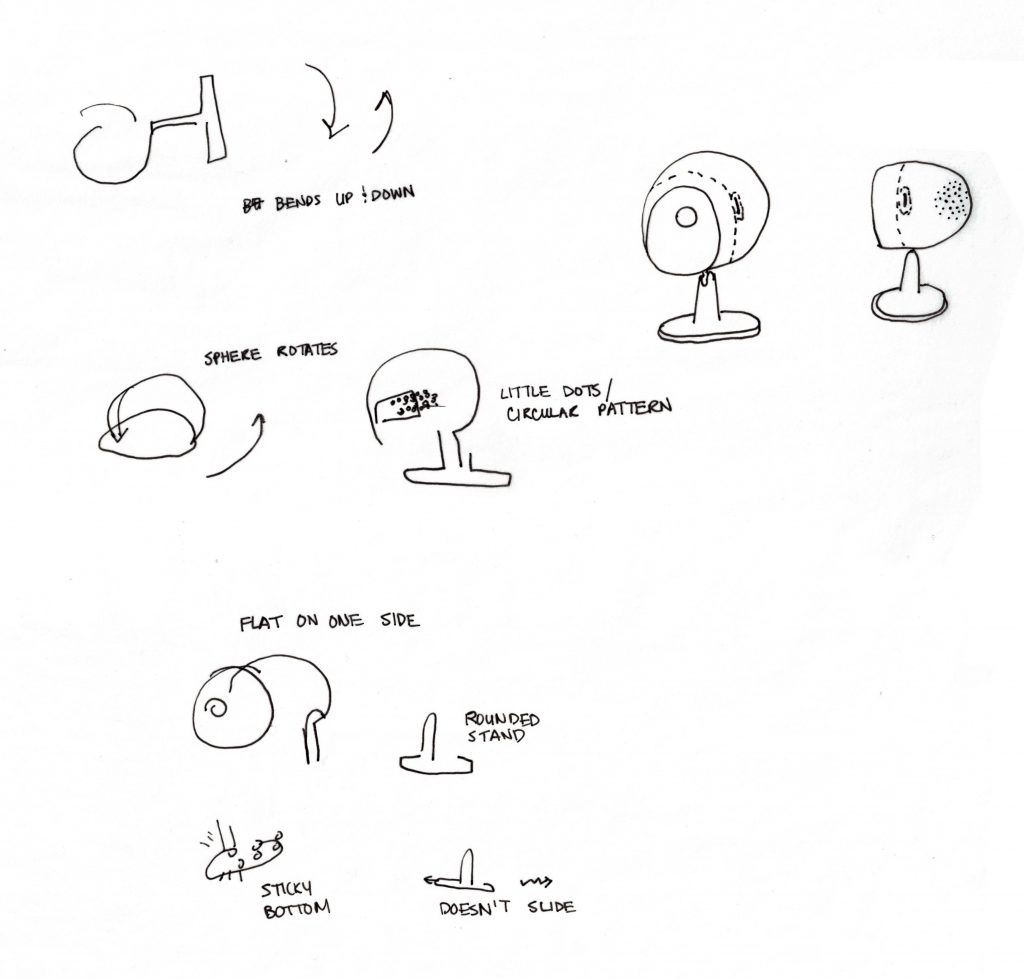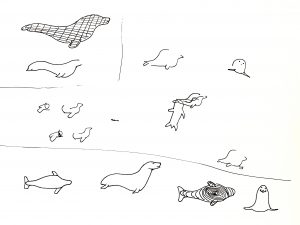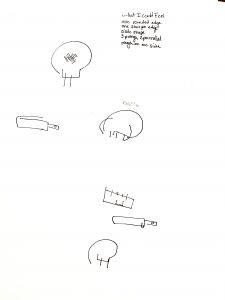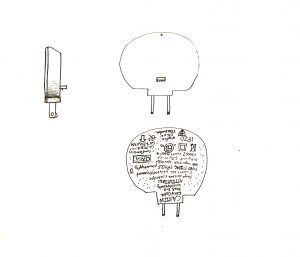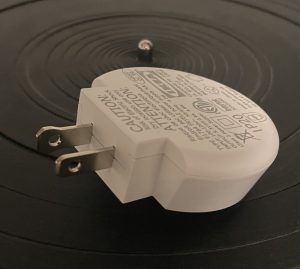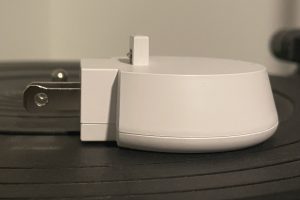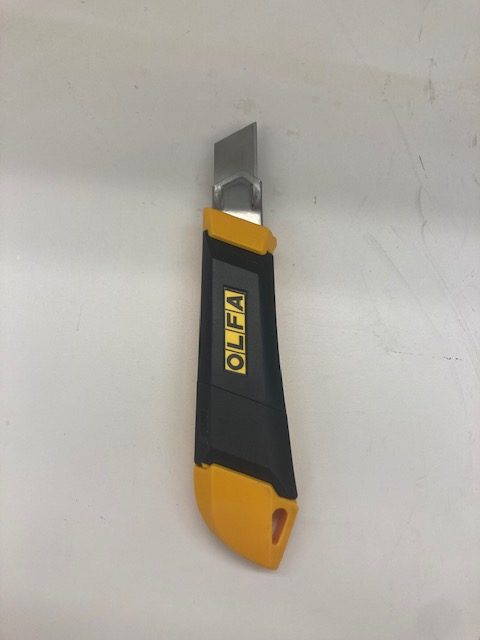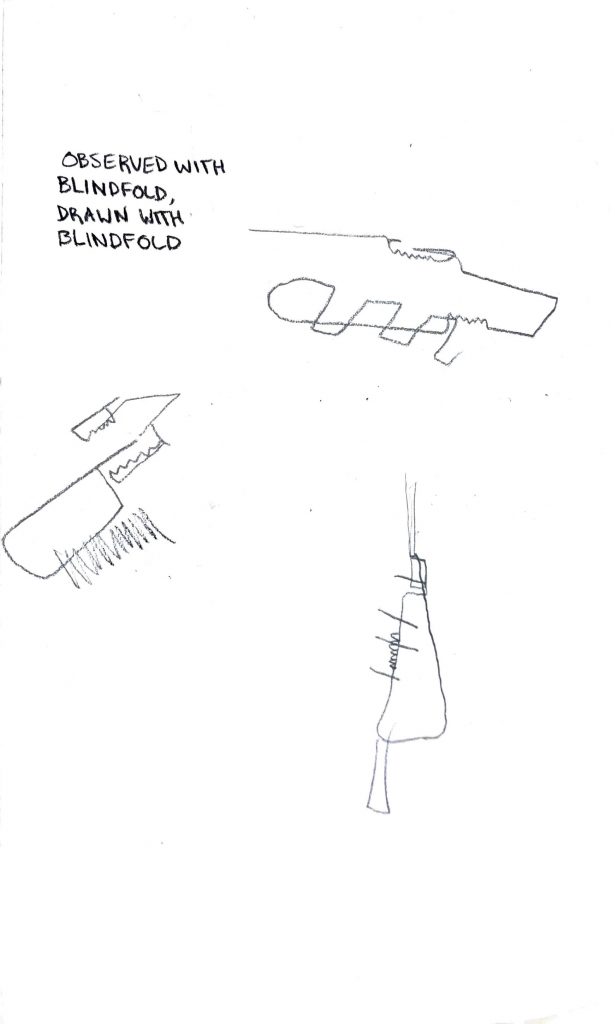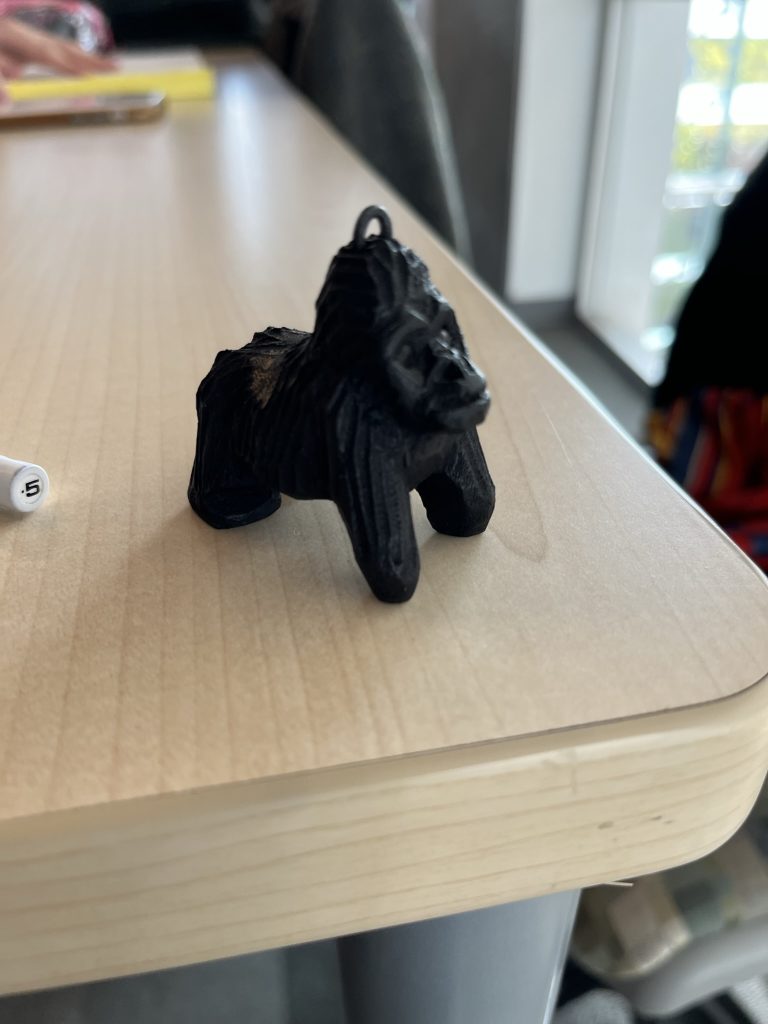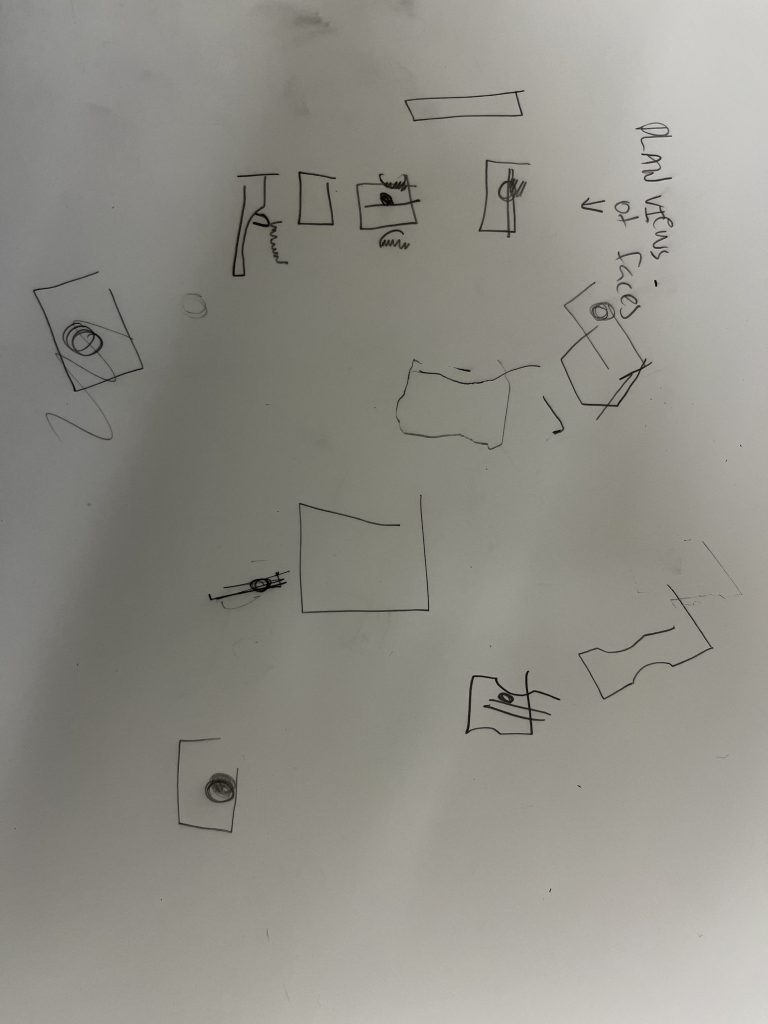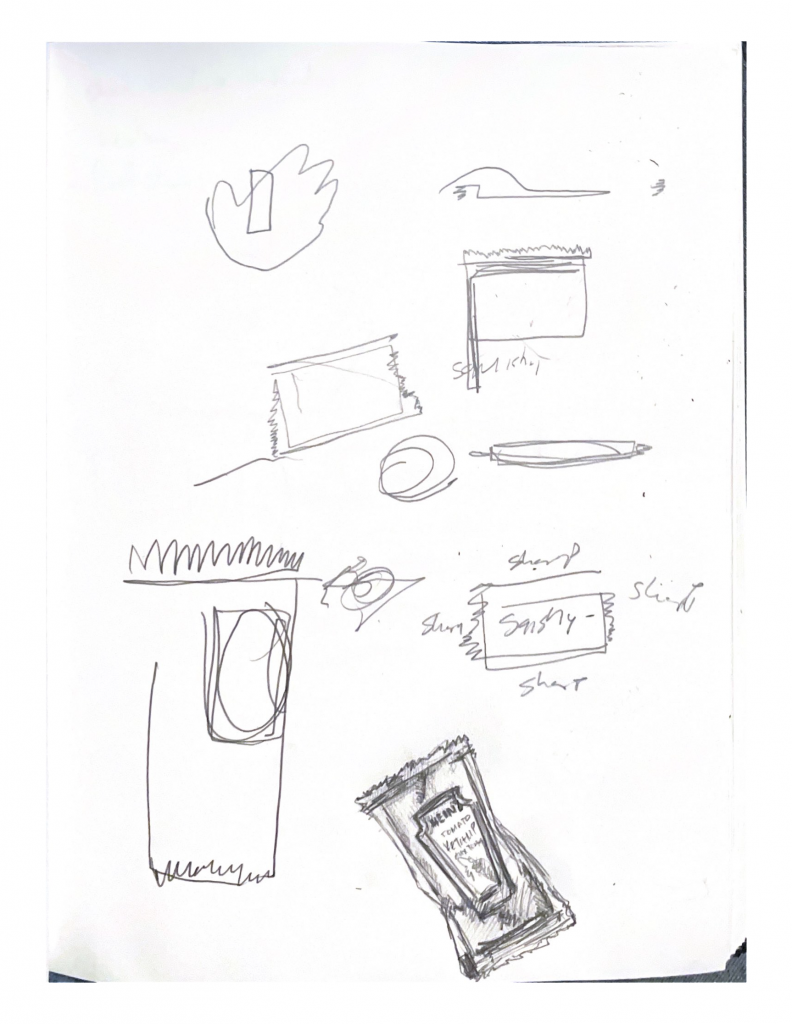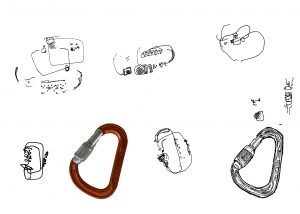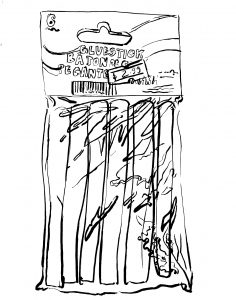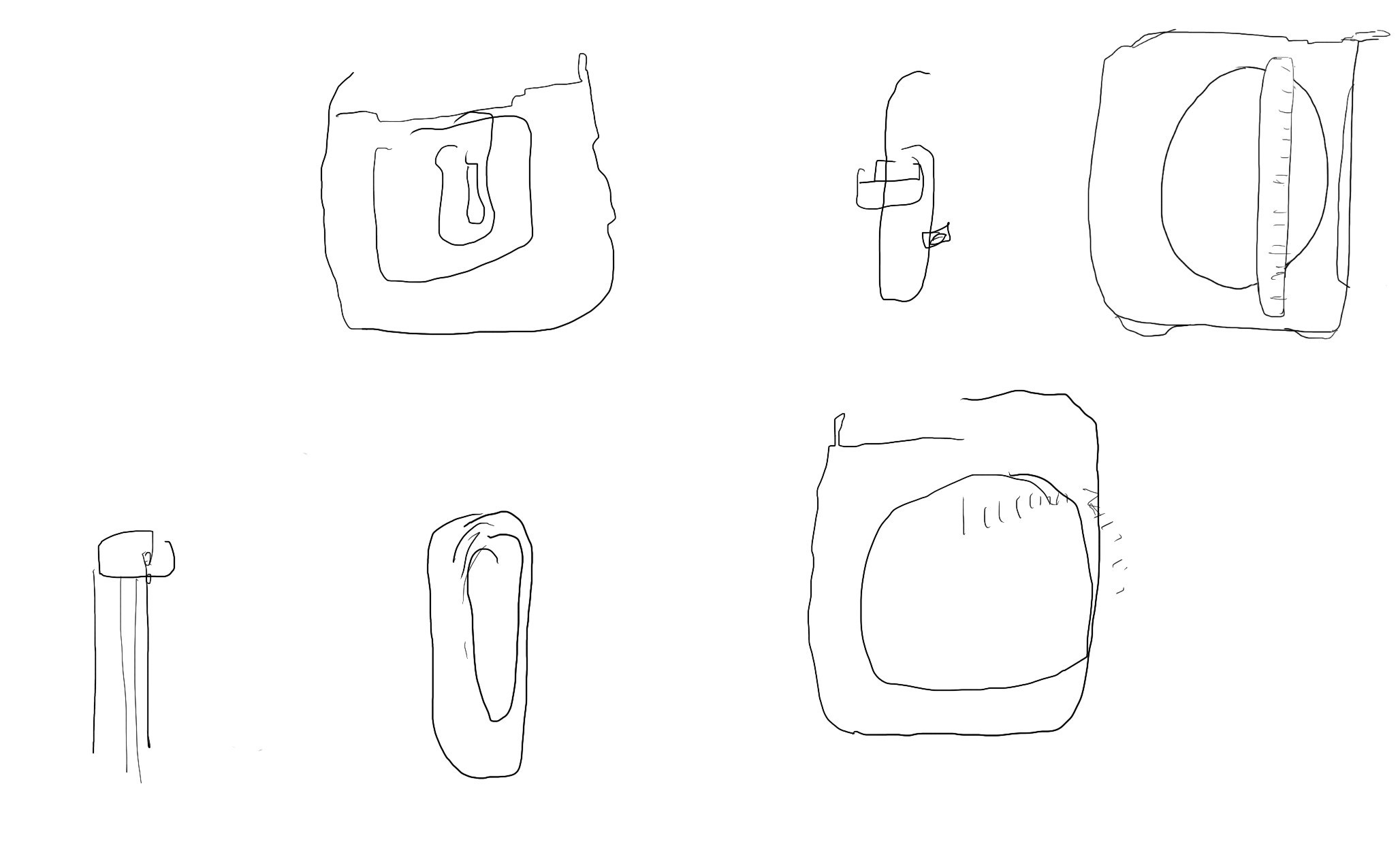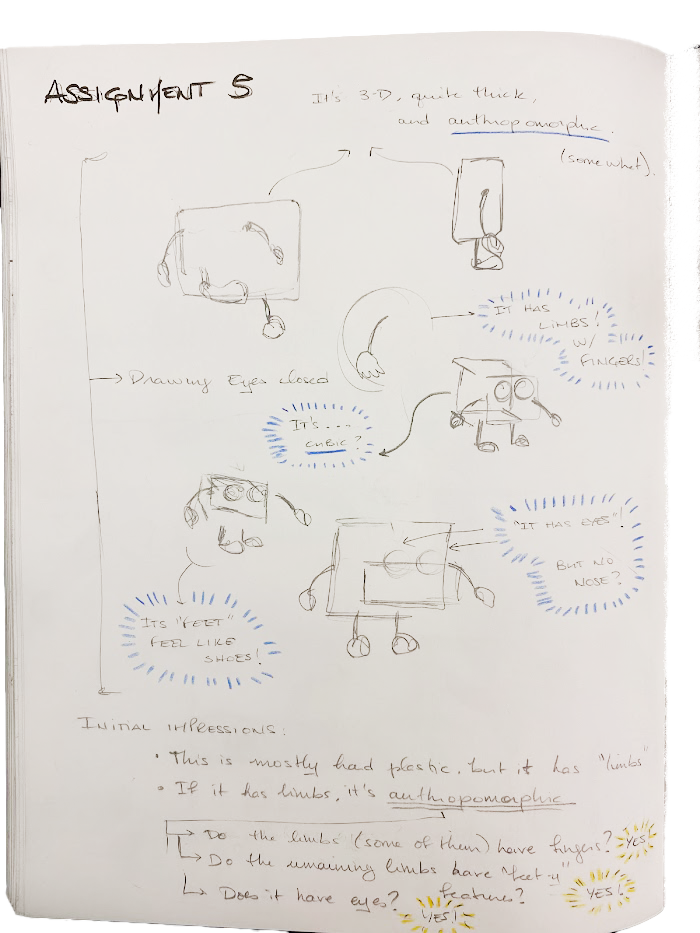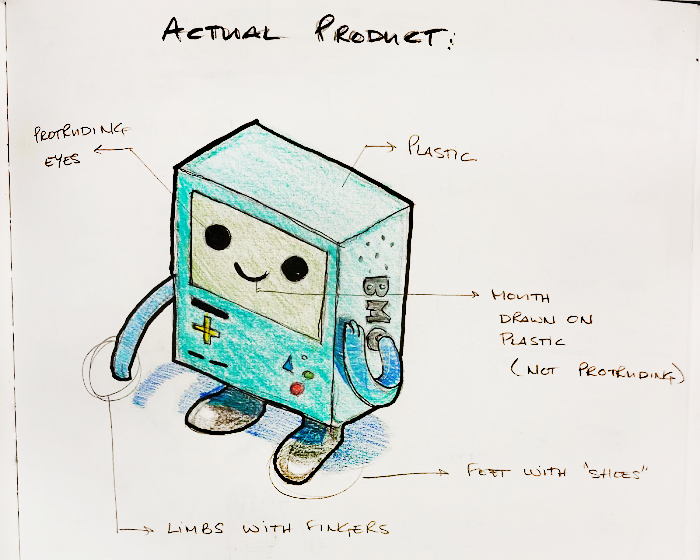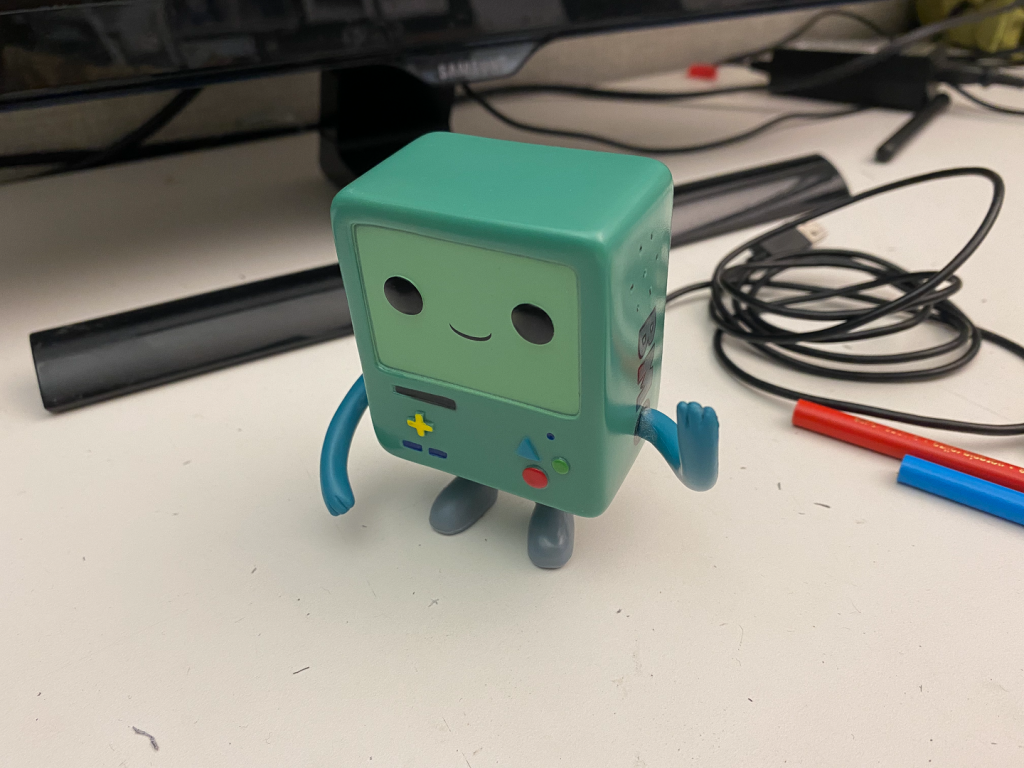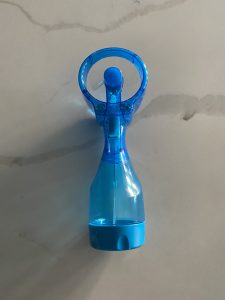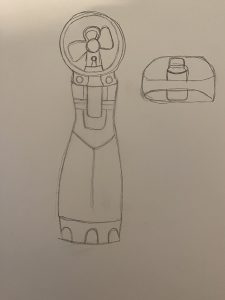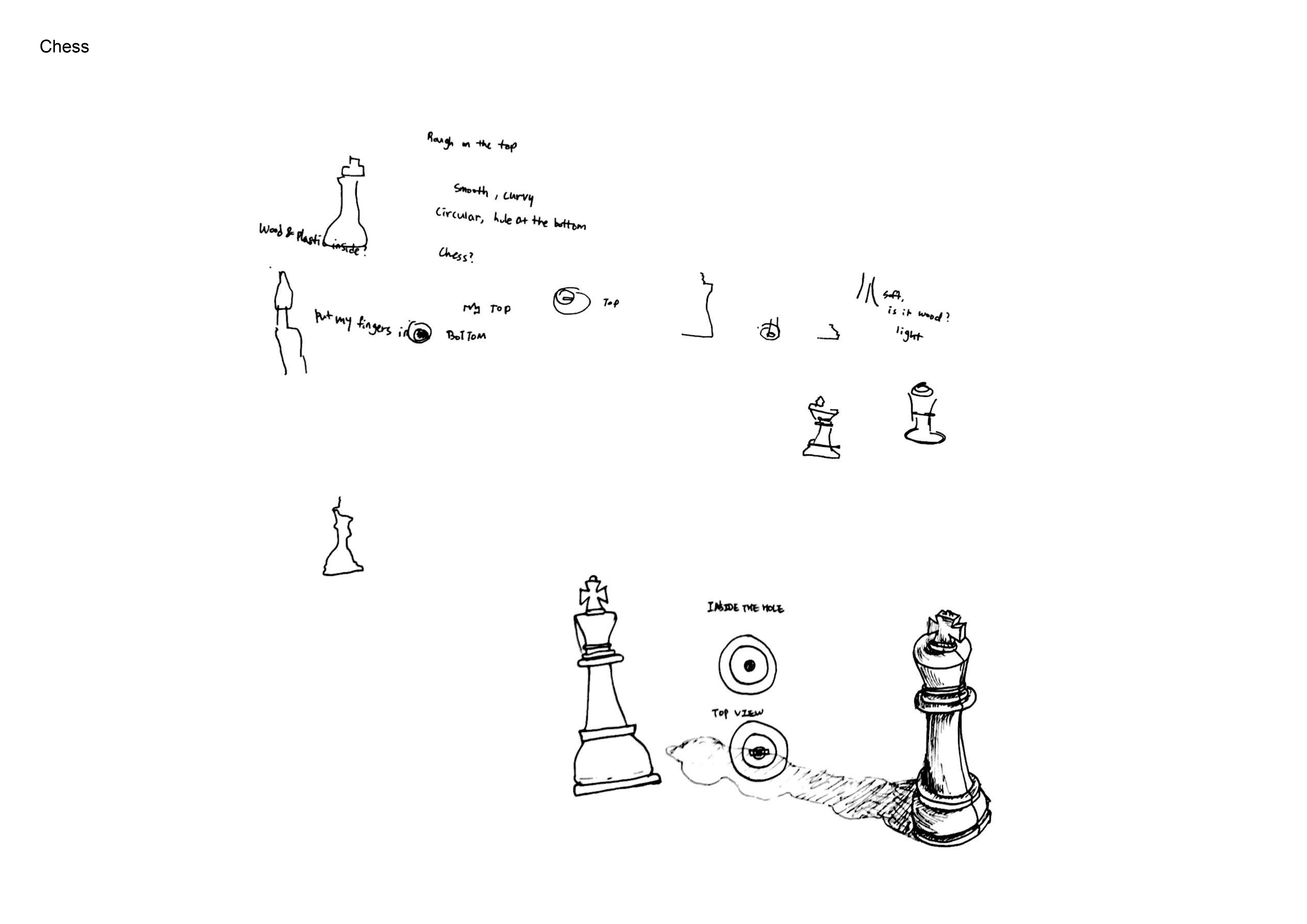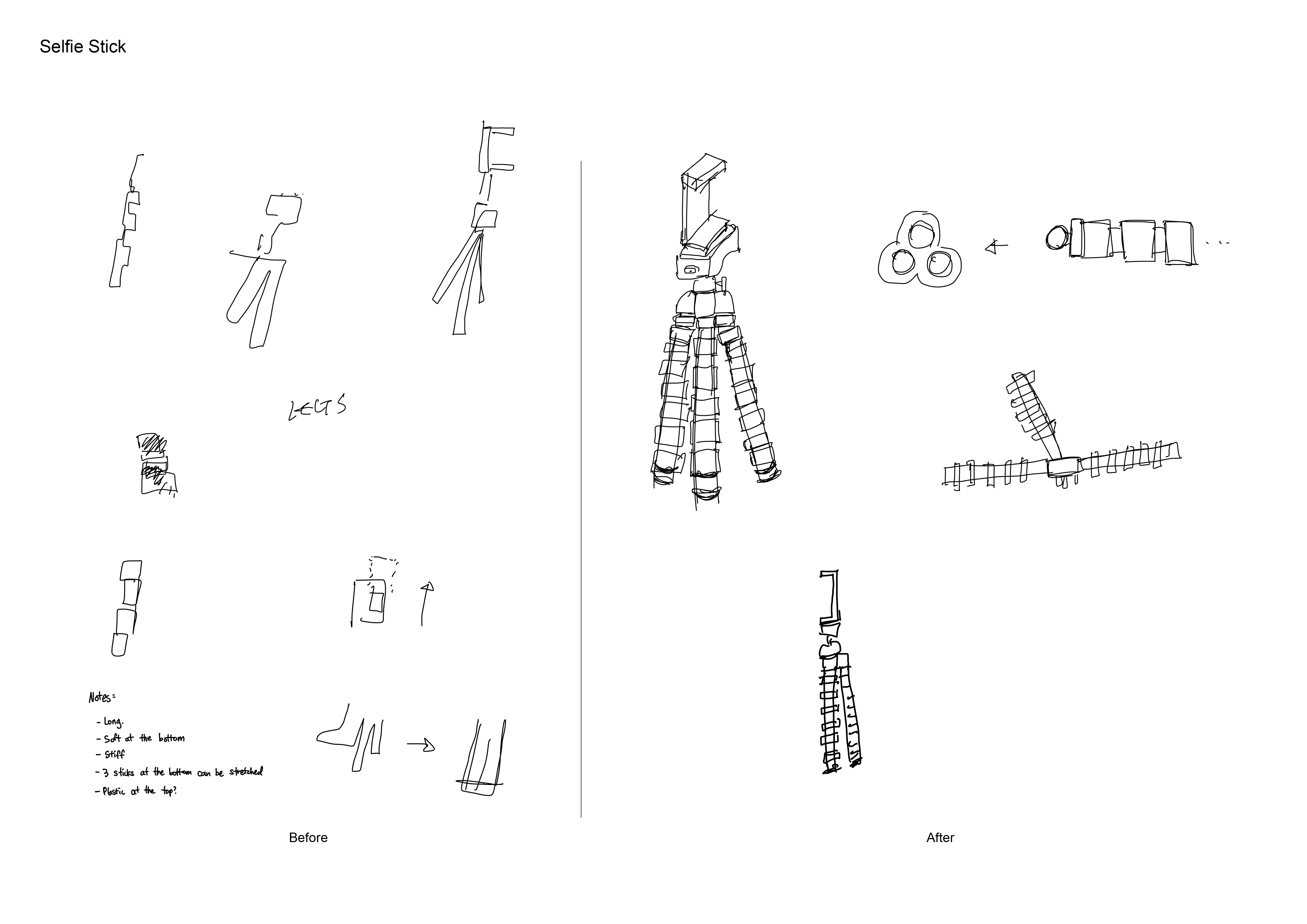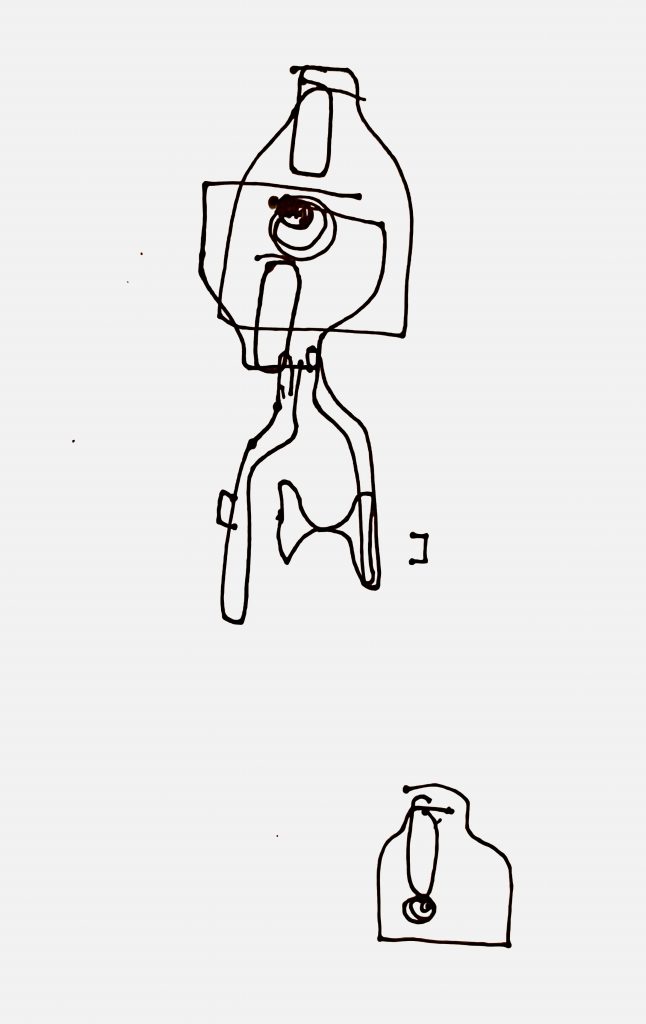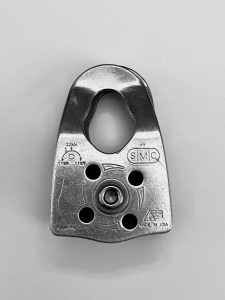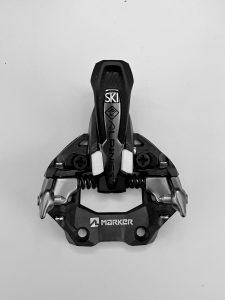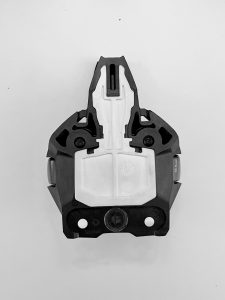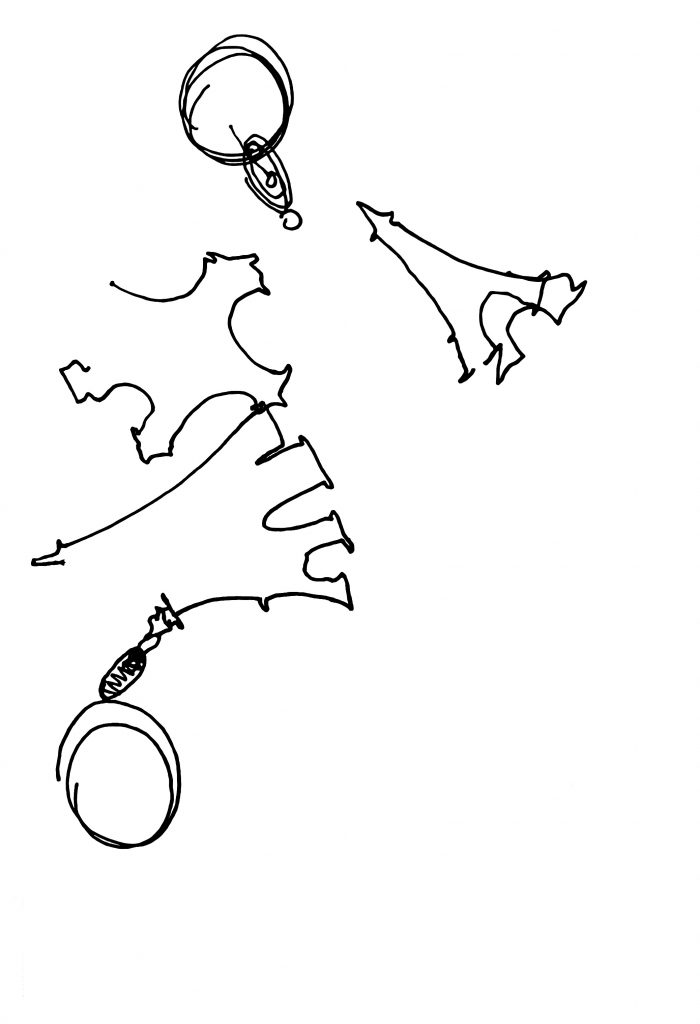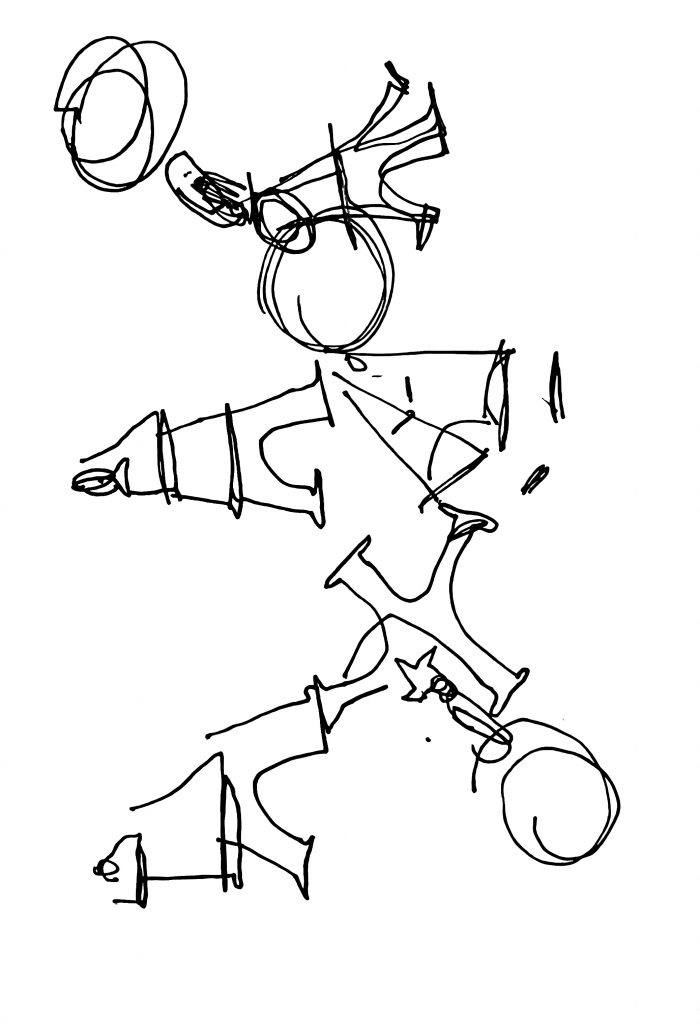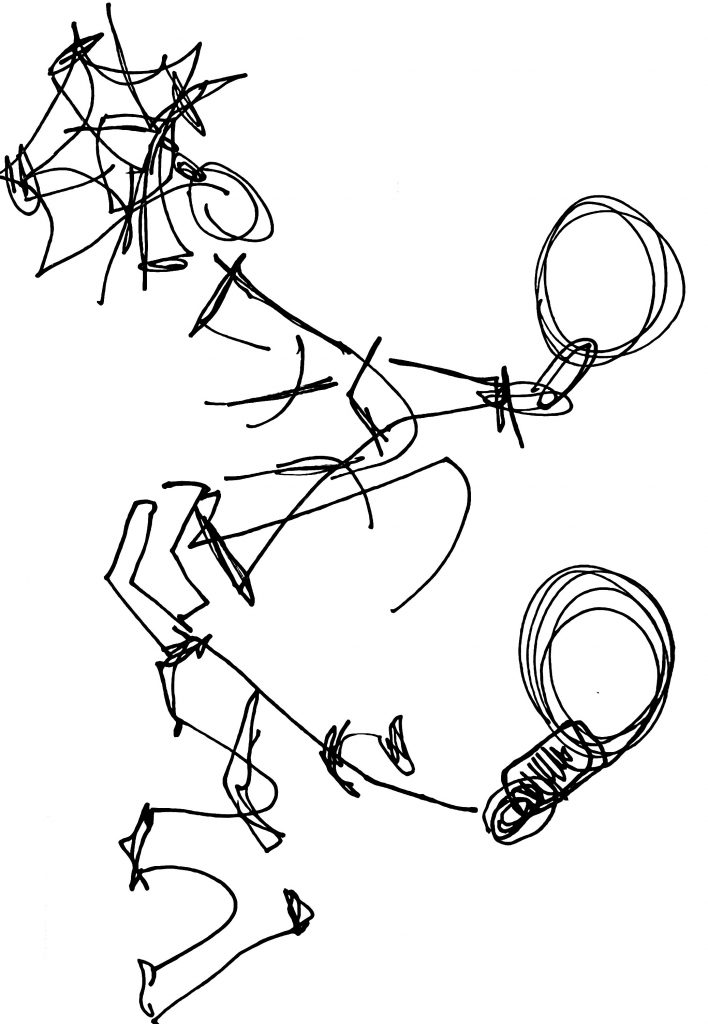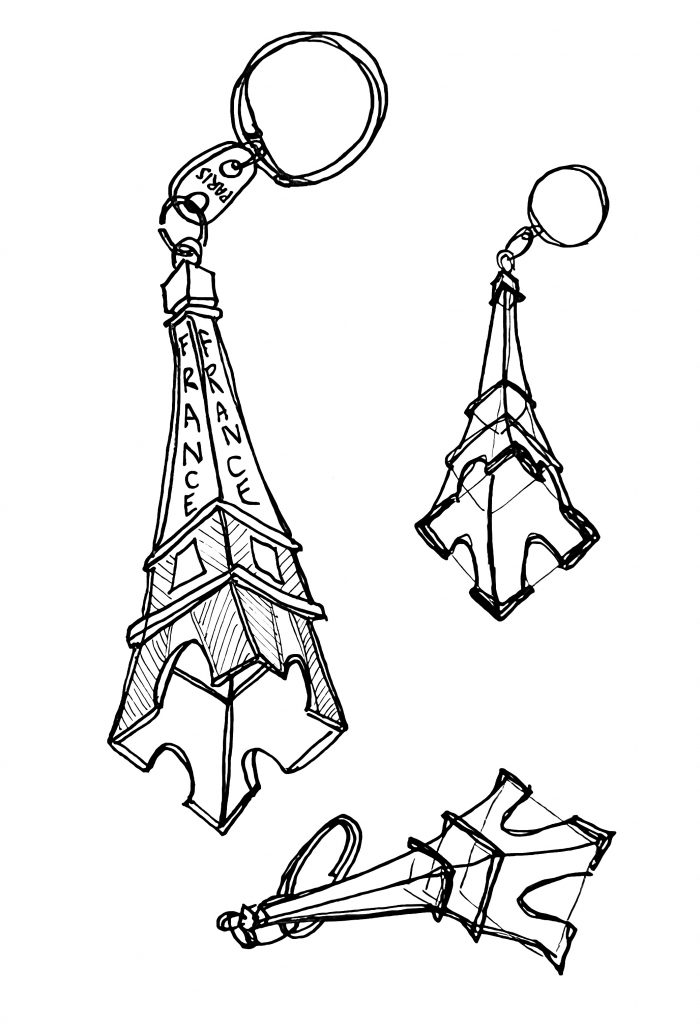AT HOME
I tried to do this assignment with two different objects. The first one (the miniature camera), I realized that the item was smooth, but had an arm that bends up and down and also rotates. I tried to show the smaller dots at the back of the camera, realizing it was otherwise mostly smooth anf flat one one side. I tried to see how sticky it was and determined it wouldn’t slide. If I were to describe the feeling of this object, it would be smooth.
I realized after drawing the first object that I absolutely needed to keep my pen on the paper in order to make a better blind folded drawing. When drawing it without the blindfold I was more focused on drawing the form than on any of the tactile elements.
The second item – called the “Angry Mama Microwave Cleaner” – was more challenging for me to draw because I really had no idea what it was. I noticed a lot of small details in the item but had trouble understanding their purpose. I were to describe this object in one word, it would be “silly”

